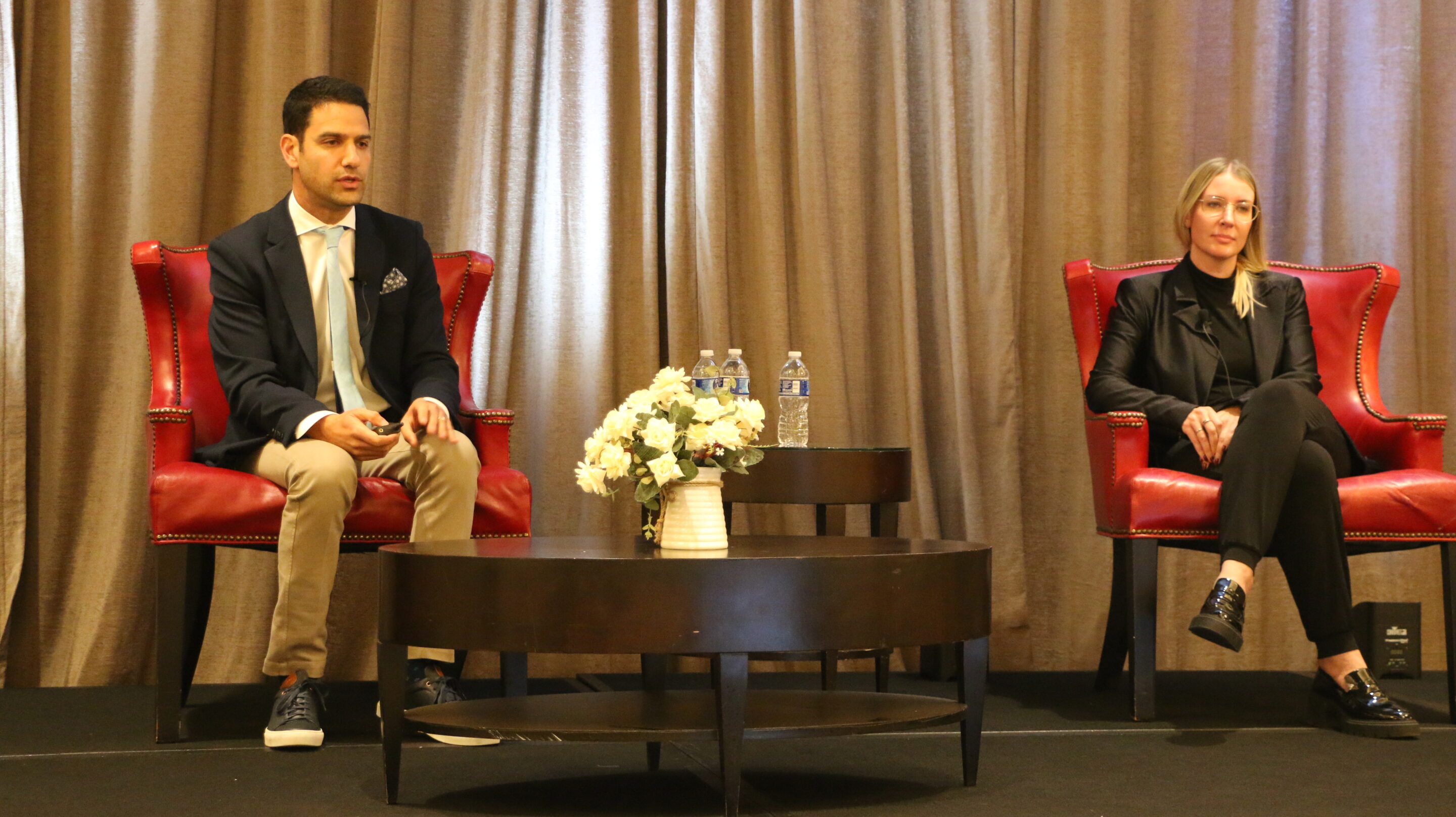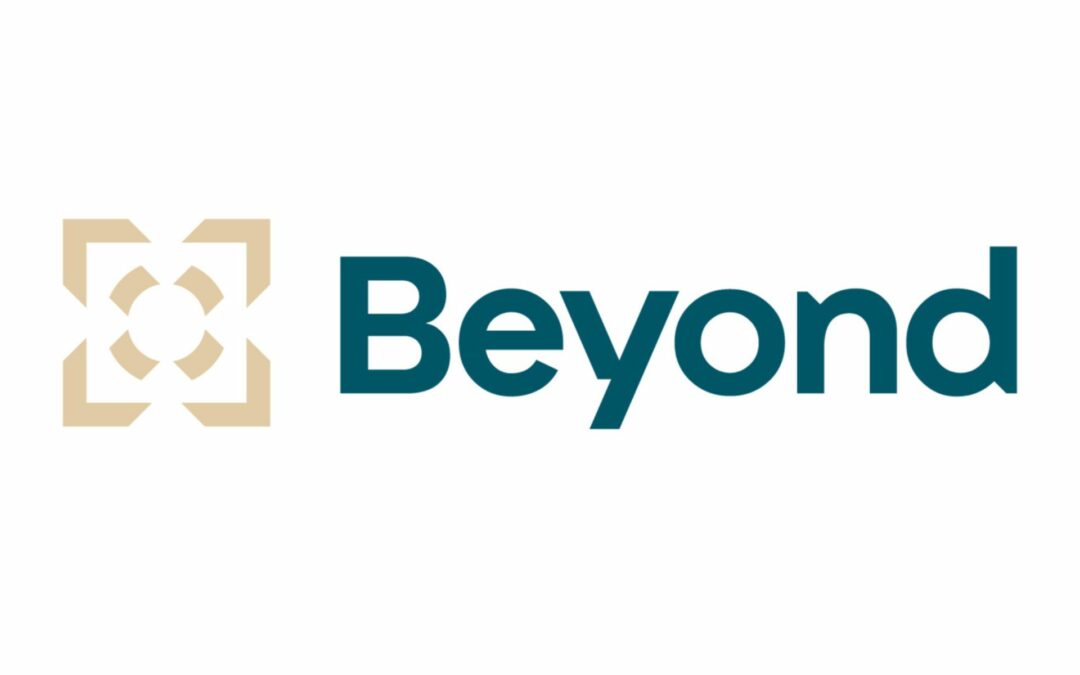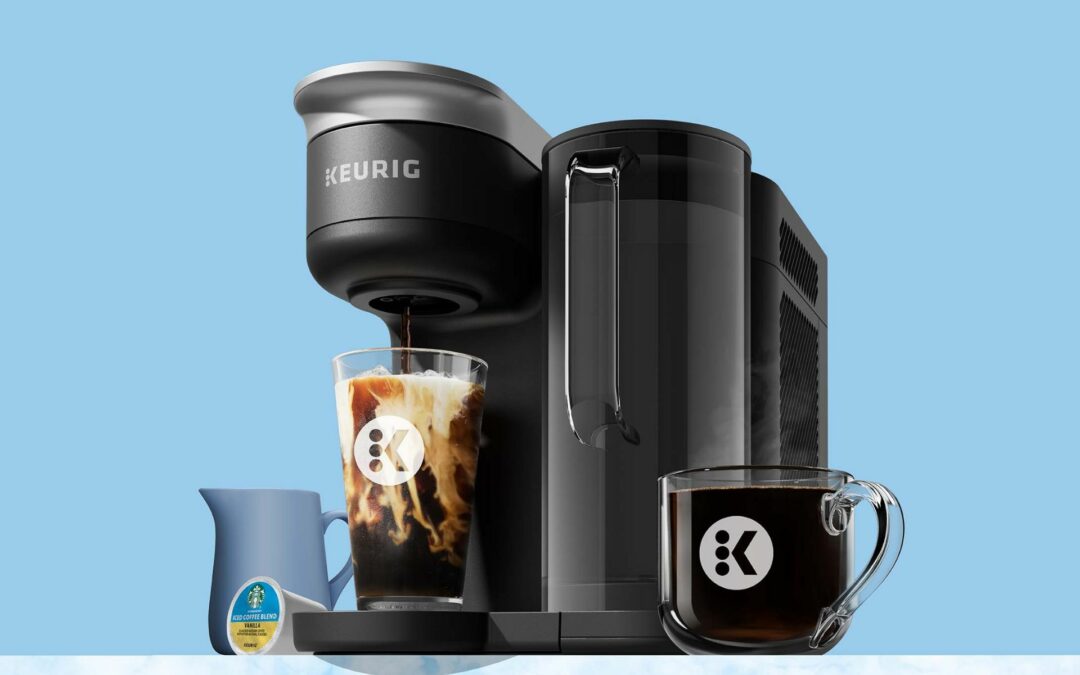The International Housewares Association’s 2023 CHESS (Chief Housewares Executive SuperSession) began yesterday with an industry education program that covered topics including regulatory compliance, retail growth opportunities, how to take control of consumer reviews and a keynote from Jonathan Johnson, CEO of the new Bed Bath & Beyond.
CHESS is IHA’s strategic networking event for chief officers and top decision-makers of IHA member companies.
CHESS is sponsored by CIT (Platinum sponsor), Houlihan Lokey (Platinum sponsor), Oracle Netsuite (Platinum sponsor), AdAdvance, Krunchbox, Monk Tree Partners, Secured Finance Network, Circana, HomePage News, Housewares Credit Group, IHA Government Affairs and the International Housewares Shippers Association.
Read a recap of the day-one sessions at CHESS:
Housewares Hot Seat: New Directions in Brand & Product Diversification

From left: Peter Giannetti, Evan Dash, Bill McHenry, Sal Gabbay
During this year’s Housewares Hot Seat, Evan Dash, founder and CEO of Storebound; Sal Gabbay, CEO of Gibson Homewares; and Bill McHenry, founder and CEO of Widgeteer discussed the beginnings of their companies, the importance of “failing quickly,” what’s changed and what’s to come.
Though the companies had different origins: Gabbay carrying on the family legacy, Dash seeing a gap in the kitchenware market to skew toward the younger consumer and McHenry licensing brands in Europe before creating original products, the prevailing message among all three was to be open to change.
Dash discussed the importance of “failing quickly,” knowing how to recover when a product does not work out and move on. Gabbay agreed, stating that mistakes are an opportunity to learn and grow.
Regarding the pandemic and the changes that have now become part of the long-term company strategy, Gabbay discussed how Gibson has changed more in the last three years than it has in the last 30 years. The digital part of the industry is getting so much bigger, he said, and they are trying to improve their digital performance and how they conduct business over Zoom.
In 2020, Groupe SEB purchased a majority stake in Storebound, so for Dash, the pandemic was less about the technology (which they were prepared for with robotic cameras in their showroom) and more about becoming part of a larger organization. The company tripled in workforce and it strived to keep the inspired culture it had worked so hard to build in a technology-driven environment.
Further discussing technology, the group discussed the importance of adopting and implementing technology. McHenry has applied a more robust accounting software and embraced TikTok, Dash is working with AI and using data and tools to further his business and Gabbay is working to improve e-commerce, the “biggest global market.”
When asked how they wanted the market to view their business when launched and how they wanted it to be viewed today, Dash said Storebound wanted their products to be necessary and fun then and today, still about the one-to-one connection, product connection and making a customer for life. McHenry said Widgeteer originally had one product, so anyone they talked to thought it was great, but now their tagline is “We create joyful moments,” and they need to be innovative in order to create those moments. For Gabbay, having a need and a value for the consumer is most important and Gibson has been working to move away from traditional thinking.
As panel moderator Peter Giannetti said in closing, “Everything is evolving, but the core values of a business stay the same.”
Solving the Regulatory Compliance Puzzle

From left: Fran Groesbeck, Thomas Lee
PFAS and Prop 65 regulations were the focus of the Solving the Regulatory Compliance Puzzle session presented by Fran Groesbeck of the Cookware & Bakeware Alliance and Thomas Lee of Bryan Cave Leighton Paisner. Craig Brightup of The Brightup Group and IHA’s government affairs representative moderated the discussion.
PFAS encompasses a large family of chemicals called “forever chemicals” that never break down and cause concern that they may cause cancer. Legislation covering PFAS is fast-moving and changing constantly so something said today most likely will change tomorrow, Groesbeck and Lee warned. And it isn’t limited to cookware. Other industries including electronics, healthcare, automotive, alternative energy, the military, aerospace and defense and oil and gas are affected as well.
Groesbeck and Lee reviewed the differences among the three states with PFAS regulations for household goods, not just cookware: California, Maine and Minnesota. California’s legislation is primarily right-to-know laws requiring notice or labeling requirements. It goes into effect for cookware beginning Jan. 1, 2024, and housewares suppliers should be taking action now, Groesbeck said. The AB1200 labeling compliance states product labels must list all designated chemicals, which expands beyond PFAS and includes 14 different chemical lists. The Minnesota law is the most restrictive; it bans chemicals and requires product reformulation and will be in full effect in 2032. Maine’s law is similar to Minnesota’s and goes into full effect in 2030.
Proposition 65 has been around since 1986 and prohibits “knowing and intentional” exposure to more than 930 chemicals without first providing a “clear and reasonable warning.” Housewares have been a prime target of Prop 65, which has a bounty hunter provision where litigants simply need to allege a violation has occurred without any harm having happened. Lee said the law is mainly enforced by private attorneys filing lawsuits.
Up-to-date information on PFAS legislation and changing regulations is available on the Cookware & Bakeware Alliance website. IHA will also be holding webinars covering PFAS and legislation.
Retail Repositioning To Identify Growth Opportunities

From left: Joe Derochowski, Don Unser
Although the housewares industry is experiencing challenging times right now, there is money to be made, according to Joe Derochowski, vice president and home industry advisor at Circana. “We are home-centric,” he said to begin his presentation, “Retail Repositioning to Identify Growth Opportunities.” Derochowski and Don Unser, president, Thought Leadership, at Circana, discussed how the current economic environment is affecting retail and consumer trends.
In the retail sector, Circana data has shown recessionary behavior by consumers for the past 18-19 months, Unser said. While other industries have seen reduced consumer spending for a while, the last three months have finally shown a pullback in the grocery segment, from 8% to 2%, Unser said. Consumers are driving this pullback, saying they cannot afford to spend at the level that retailers are increasing prices.
The decline in retail spending reflects the differences in prices and wage growth. Since 2019, prices have risen 32% while wage growth has only increased 16%, “a driving factor in what consumers can buy,” he explained. Prices in general merchandise, retail food and beverage and nonedible consumer packaged goods have remained well above 2019 pre-pandemic levels, but wage growth has not kept pace, affecting retail sales.
Derochowski said the long-term outlook for the home category will be rough until Q3 of 2025 and then begin to improve. He said that replacement of appliances and other products bought during the pandemic should begin then, bringing a strong performance for the second half of the decade.
Taking Control of Consumer Reviews

From left: David Rapps, Laura Kegley
In the session, “Taking Control of Consumer Reviews,” David Rapps, president of Wholescale, and Laura Kegley, chief revenue officer, North America of Revuze discussed how to make consumer reviews a larger part of housewares marketing marketing strategies.
Kegley stated that 92.4% of consumers use reviews to guide their purchasing decisions, citing a 380% conversion rate to sale if a product shows reviews on a page. In addition, Rapps maintained that the most trusted content shoppers consume pre-purchase and ratings and reviews, looking for popularity, recency and authenticity. He said 78% of shoppers desire products with high volumes of reviews, 38% of shoppers avoid products with dated reviews and 90% of shoppers distrust brands with inauthentic reviews.
Many retailers are applying pressure for brands to receive more reviews, but collecting reviews organically and cost-effectively can be a struggle for retailers and suppliers, said Rapps. Product sampling can be too costly, inauthentic or dated quickly and direct-to-consumer email solicitation through asking for reviews after a consumer buys a product doesn’t convert, he continued.
As a platform that helps brands and retailers generate reviews, Wholescale instead uses insert cards with QR codes and crafted messaging, registration and review forms and integration with retailers and shopping sites, noting the importance of increasing reviews to strengthen relationships with retailers, surface insights and drive revenue growth.
The voice of the consumer can be heard through review syndication, survey collection, social listening and verified buyer reviews, said Kegley. In a world where feedback evolves daily, data from reviews offer real-time insights, but it is important the data come from verified buyers, consumers who have submitted their review through a specific process that tracks purchase history.
Revuze uses an AI-powered solution to help companies monitor the e-commerce market, identify emerging trends and assess products’ strength and weaknesses through these verified reviews. AI can add time back into the day for data analysts; less time can be spent mining the data and more time can be spent using that data for strategy. This data, she stated, can be used for e-commerce and retail optimization, product development and innovation, competitive analysis, marketing and advertising campaigns, customer support and service improvement, market research and trend analysis and supply chain management.
Retailer Keynote: Bed Bath & Beyond/Overstock

From left: Peter Giannetti, Jonathan Johnson
“Boy, do I think we got a steal of a deal,” said Jonathan Johnson, CEO of the new Bed Bath & Beyond, during the Retailer Keynote session. He was referring, of course, to Overstock’s recent acquisition of Bed Bath & Beyond’s intellectual property and subsequent rebranding to the retailer.
When Johnson joined Overstock, the company was still exactly as the name described, a liquidator, but in the years that followed it became a general, mass merchant retailer. With that, the name became confusing for consumers who didn’t realize that they were getting first-run, quality goods, he said. While Overstock had a successful business model, it was dragged down by a brand name that no longer matched what it sold.
“It was still a strong brand that we thought was worth something and it was worth more to us than our competition because it solved the problem we had with Overstock, the liquidation stigma,” Johnson asserted. Through the rebranding to Bed Bath & Beyond, Johnson believes the company can combine Overstock’s e-commerce strategy with the legacy name and brand of Bed Bath & Beyond to create success.
To stay on track, Johnson stated the company plans to listen to its consumers and its partners and suppliers. On the consumer side, he believes they have a chance to earn the customers’ trust by selling brand names with good prices and good customer service. With partners, he asserted they will maintain a profitable, strong balance sheet and share customer data and analytics with suppliers.
While Overstock was strictly e-commerce, Bed Bath & Beyond was omnichannel, but Johnson maintained they will be focusing solely on e-commerce, stating, “While we never say never, for brick and mortar store, the answer is never for now and I don’t see that changing soon.” On the revamped Bed Bath & Beyond website, the goal was to not alienate the legacy of Overstock and what it had to offer while making the site feel very comfortable for the legacy Bed Bath & Beyond consumer. Johnson said they are growing significantly in kitchen, bed and bath since the rebrand, but now they are looking to market Overstock products such as rugs and outdoor patio furniture to those customers as well.
Looking toward the future, Johnson remarked, “We’ve learned that the Bed Bath & Beyond brand still has cachet,” noting the consumer growth is up double-digit percentages since launch. The company is still learning, making sure they have the right product mix, hoping to add new SKUs, and making sure the site is right for the new combination of customers. The brand will also be building a registry business to help consumers celebrate all of life’s moments from dorm room shopping to weddings.
Business is succeeding when they solve the customer’s problem, Johnson said, “We plan to listen to what the customers want.”





